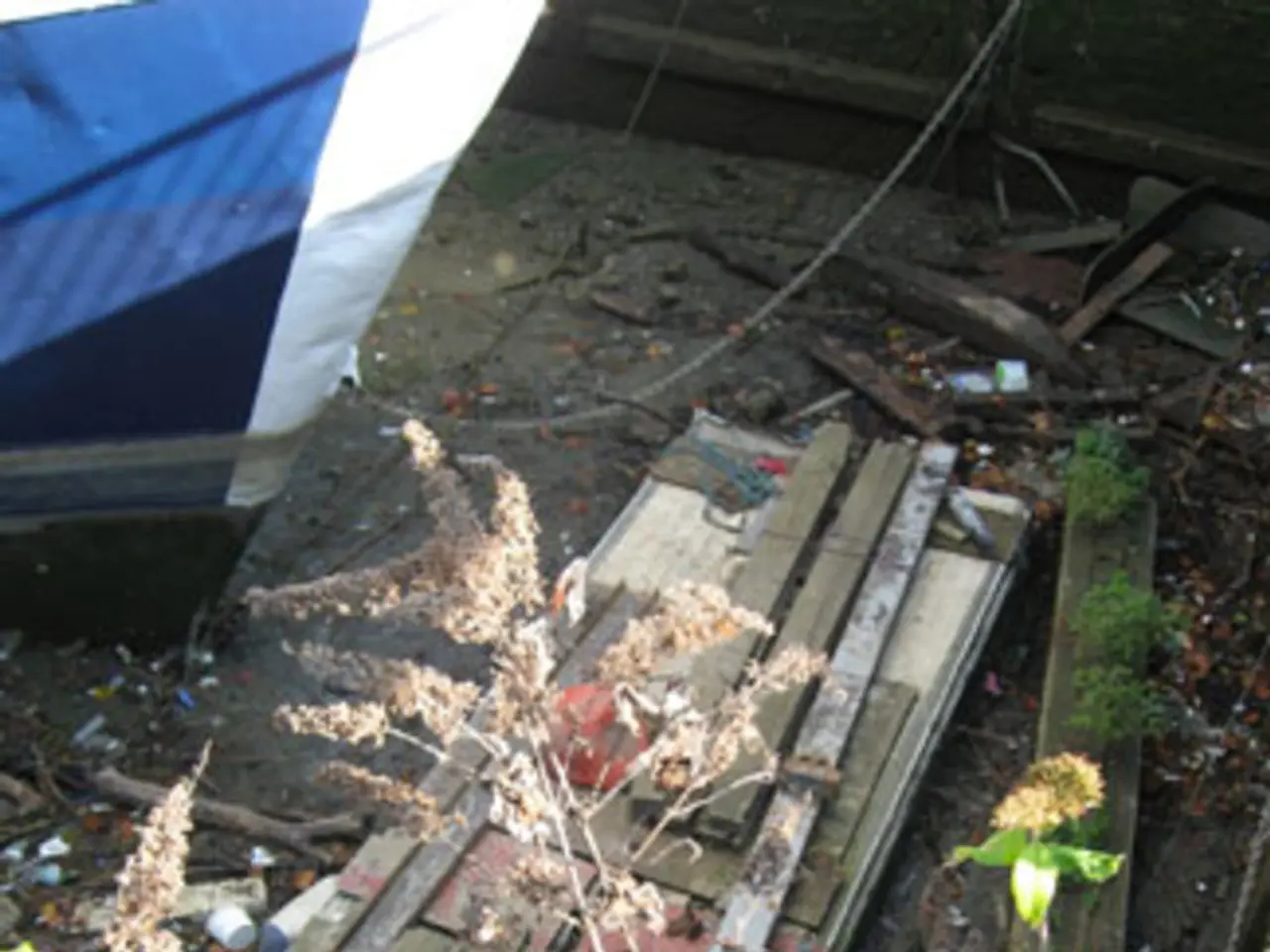Craftsmen construct a novel Spreewald watercraft, using adhesive instead of traditional bending methods. - Craftspeople construct novel Spreewald watercraft by utilizing adhesive rather than traditional bending techniques.
In the heart of Brandenburg, Germany, a significant shift is underway in the centuries-old craft of Spreewald boat-making. Originating in 1973, the first aluminium Spreewald boats were introduced, marking a departure from the traditional elm boats that had been in use since the mid-19th century. Now, a new innovation is breathing fresh life into these traditional watercraft, with carpenters from Straupitz employing glued wooden panels in their construction.
The Spreewald boat, recognised as a cultural heritage, encompasses not only its rich history and development but also the unique methods of its construction. Traditionally, the boat's sides were made from a single long wooden piece that was bent over fire. However, in today's world, high-quality wood for such purposes is becoming increasingly scarce.
The new method of boat building, using smaller veneer sheets that are glued crosswise and pressed into shape, offers a solution to this challenge. This innovative approach ensures a stable and stress-free boat, with the glued panels providing a more uniform and consistent structure compared to traditional bent wood. This uniformity can enhance the overall strength and stability of the boat, as the panels do not have the same risk of weak points or uneven stress distribution that can occur with bent wood.
Moreover, the use of modern adhesives and techniques can potentially extend the lifespan of a boat by reducing the likelihood of wood cracking or splitting, common issues with bent wood over time. Furthermore, glued panels might offer better resistance to impacts and scratches, potentially reducing the risk of delamination compared to traditional methods.
This modern construction method is not only beneficial for durability but also for sustainability. Using glued wooden panels can be more material-efficient, as it allows for the use of flatter, more uniform pieces of wood. This can reduce waste and make better use of available timber resources. Additionally, boats constructed with glued panels might require less maintenance over time, as the risk of cracks and splits is reduced.
The Spreewald Association, which played a key role in getting the building and use of the Spreewald boat recognised as intangible cultural heritage, welcomes this innovation. They commend the effort to address the availability of raw materials and make the Spreewald boat future-proof.
Carpenters in Straupitz have already launched a prototype of the new boat, measuring 6.5 meters, into the water. The carpentry has also received some orders for the new boats, indicating a promising future for this innovative approach.
The carpentry plans to collaborate with BTU Cottbus to develop further solutions for the coating of the boats, addressing the current challenges posed by the use of Swedish root tar. This collaboration could pave the way for a niche for fans of traditional wooden boats, especially in a time when aluminium boats dominate for economic reasons.
In summary, while glued wooden panels can enhance durability and sustainability, their use in traditional Spreewald boats would need careful consideration to ensure that the boats remain true to their heritage while benefiting from modern construction methods. The future of Spreewald boat-making seems to be a blend of tradition and innovation, promising a unique and enduring craft for generations to come.
- The Spreewald Association, acknowledging the innovation, is supportive of the approach to address the scarcity of high-quality wood for boat construction, as it makes the Spreewald boat more sustainable and future-proof.
- Embracing science and technology, carpenters in Straupitz are collaborating with BTU Cottbus to develop more efficient coating methods for the new boats, aiming to solve the challenges posed by the use of Swedish root tar.
- Apart from enhancements in durability and sustainability, the new construction method ensures compliance with environmental-science principles, as it promotes more material-efficient use of timber resources and reduced waste in home-and-garden activities like boat-making, aligning with the principles of sustainable-living.




